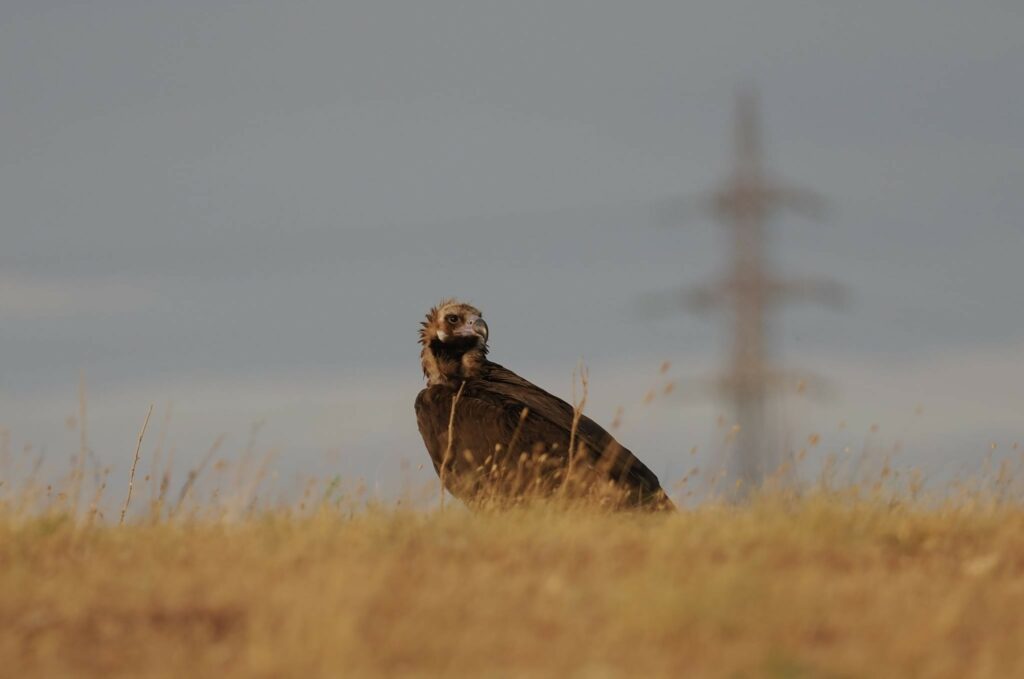
Nature and vulture fans can watch LIVE the breeding period of Europe’s largest vulture. Our colleagues from SEO BirdLife are showcasing the everyday lives of Cinereous Vulture nesting in the Sierra de Guadarrama National Park!
Cinereous Vulture Breeding Season
The Cinereous Vulture has the longest breeding period of all bird of prey in Europe. It nests in old forests on remote wide treetops, and sometimes in cliffs or even on the ground. The species build huge nests on pine or oak trees that can reach a diameter of up to 254cm and a height of 129cm, although they are typically smaller. Breeding pairs lay only one egg each season in late February to the first half of March, and the incubation of the egg typically lasts about 55-60 days, but can vary. At the end of April to mid-May, the chick hatches. The parents take care of the chick for around 100-115 days, until it fledges and leaves the nest in late August to early September.
Monitoring a new nest
Since 2014, SEO BirdLife has been running a webcam of a Cinereous Vulture nest, providing a glimpse into the species’ breeding season. This time around, the webcam follows the life of a new active nest located on a large Scots pine in the Sierra de Guadarrama National Park on its Madrid side. In this area, a large Cinereous Vulture colony exists that totals 360 pairs in the Sierra de Guadarrama. Alto Lozoya’s nucleus (Rascafría, Madrid) is the most important with about 153 pairs and one of the most important colonies worldwide. Conservationist located and monitored this nest in 2007, and since then, the Cinereous Vultures have laid their only egg on nine occasions and have succeeded in raising their chick on seven of them. The reproduction has been successful for the last four years. This year, they laid their egg a few days ago – so you can now watch the dedicated parents incubating their clutch for the next two months until, hopefully, the chick hatches!
It is important to note that approximately 70% of Cinereous Vulture pairs that start to breed succeed in reproducing, so it is most likely that everything will go well, and the chick will hatch in mid-May, leaving the nest in late summer.
The webcam project is financed and developed by the Sierra de Guadarrama National Park in collaboration with SEO BirdLife.
Cinereous Vulture population in Spain
According to the latest census published by SEO BirdLife, the current population of Cinereous Vultures in Spain could be around 3,000 breeding pairs, which is more than 90% of the European population. Cinereous Vultures favour two habitats in Spain, the Mediterranean forests of pine forests in the high mountains and the sub-Alpine habitat of Spain’s central mountain ranges. Breeding colonies are found in Extremadura, Castilla-La Mancha, Castilla y León, Andalusia, Madrid, Catalonia and the Balearic Islands. Working with autonomous regional governments, the Spanish population of Cinereous Vultures have helped restock and reintroduce the species to other parts of Europe, such as in Bulgaria and France.



